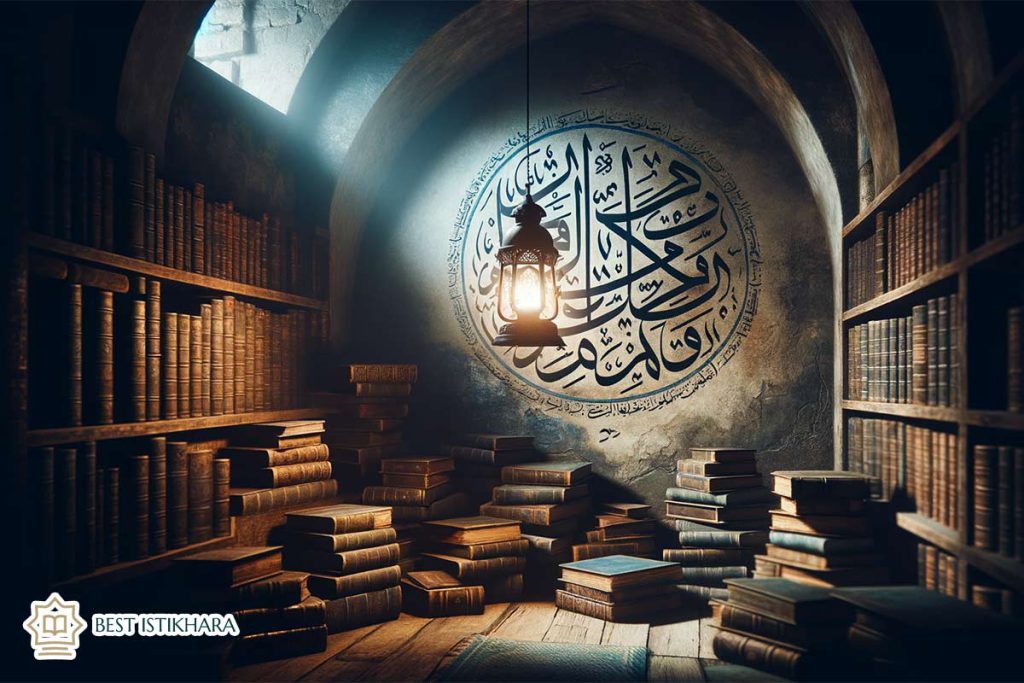Dream interpretation holds a significant place in Islamic culture, often seen as a way to unlock deeper spiritual meanings and guidance. The Attic of Forgotten Memories, a common dream symbol, is rich with Islamic interpretative layers. This dream scenario typically represents the recesses of the mind, where old memories and spiritual lessons reside. In Islam, such dreams are not merely reflections of the subconscious but are considered messages from the divine. This article delves into the Islamic perspective on interpreting dreams about the attic of forgotten memories, exploring its symbolism and how it relates to the teachings of the Quran and Hadith. Through this lens, we aim to understand the spiritual implications and guidance that these dreams offer to the dreamer in their journey of faith and self-discovery.
Interpretation of Seeing Attic of Forgotten Memories in Islam
In Islamic dream interpretation, the “Attic of Forgotten Memories” can be a symbolic and significant motif. The attic in a dream often represents hidden or stored aspects of the self, such as old memories, repressed emotions, or undeveloped talents. In the context of Islamic culture, where dreams are considered meaningful and sometimes seen as messages from the divine, interpreting the attic can have deeper implications.
- Storage of Past Experiences: In Islam, the attic could symbolize the accumulation of life experiences, both good and bad, that are stored in the subconscious. This aligns with the Islamic understanding of life as a journey of continuous learning and spiritual growth.
- Forgotten Memories: The forgotten aspect may indicate neglected or overlooked lessons and wisdom. In Islamic teachings, self-reflection is encouraged to gain deeper insights into one’s life and spirituality.
- Need for Reflection and Understanding: The dream might be calling for introspection. It could be a reminder to revisit past experiences, learn from them, and apply these lessons in current life situations, consistent with the Islamic emphasis on learning from one’s past.
- Spiritual Awakening: Finding oneself in an attic full of forgotten memories could also symbolize a spiritual awakening or the need to reconnect with one’s faith and the teachings of Islam. It might be a prompt to delve deeper into personal faith and understand the broader purpose of life.
- Personal Growth and Development: This dream may also represent personal growth and the need to explore untapped potential or neglected aspects of one’s personality, in line with the Islamic belief in the continual development of the self (both spiritually and personally).
- Divine Guidance: In Islam, dreams can sometimes be considered a form of guidance from Allah. This dream could be interpreted as divine guidance to pay attention to aspects of one’s life or spirituality that have been neglected.
- Connection with Ancestors or Heritage: The attic, as a place of old and possibly ancestral belongings, might represent a connection with one’s roots and heritage, reflecting the Islamic value of understanding and preserving one’s lineage and history.
Scholars Opinion About the Dream of The Attic of Forgotten Memories in Islam
The interpretation of dreams, including the concept of an attic filled with forgotten memories, in Islamic tradition, is a nuanced field often influenced by the works of various Islamic scholars. However, it’s important to note that there isn’t a specific, universally-acknowledged interpretation of this particular dream symbol among scholars. Instead, their opinions might be derived from broader principles of dream interpretation in Islam. Here are some perspectives that might be shared by scholars in this context:
- Ibn Sirin’s Approach: One of the most renowned Islamic dream interpreters, Ibn Sirin, emphasized that the context and the personal circumstances of the dreamer are crucial for accurate interpretation. He might suggest that an attic of forgotten memories should be interpreted in light of the dreamer’s current life situations and feelings.
- Al-Ghazali’s Perspective: Al-Ghazali, a prominent Islamic theologian and philosopher, discussed dreams as reflections of one’s soul and inner state. He might interpret the attic as a metaphor for the depths of the subconscious mind, where forgotten memories and unaddressed emotions reside.
- Contemporary Islamic Scholars: Modern scholars often blend traditional interpretations with psychological insights. They might see the attic as a symbol of neglected aspects of the dreamer’s life or spirituality, encouraging a reconnection with forgotten parts of oneself or one’s faith.
- Symbolic Representation: Some scholars might interpret the attic of forgotten memories as a symbol for neglected or forgotten Islamic teachings and principles, suggesting a need for the dreamer to reconnect with their faith and study more deeply.
- Dreams as Divine Messages: Following the tradition that some dreams can be messages from Allah, scholars might view this dream as a divine nudge towards self-improvement, spiritual growth, or a reminder of past lessons that are relevant to the dreamer’s current life challenges.
- Cultural and Contextual Factors: Scholars also consider the dreamer’s cultural background and personal experiences. The attic in a dream might hold different significances for individuals depending on their personal history and cultural understanding of attics and memories.
- Caution in Interpretation: Many Islamic scholars caution against over-reliance on dream interpretation and emphasize that not all dreams have a spiritual or divine meaning. They advocate for a balanced approach, considering both the psychological and spiritual aspects of dreams.
Dream Interpretation of The Attic of Forgotten Memories of Imam Sadiq
Imam Ja’far al-Sadiq, a prominent figure in Islamic history and a revered scholar in both Sunni and Shia traditions, made significant contributions to Islamic teachings, including the interpretation of dreams. However, there is no specific record of Imam Sadiq’s interpretation of the dream of “The Attic of Forgotten Memories.” His approach to dream interpretation, like many Islamic scholars, emphasized the importance of context, the individual’s personal life, and the state of their faith.
In general, Imam Sadiq’s teachings often stressed the importance of self-awareness, introspection, and understanding one’s inner spiritual state. If he were to interpret a dream about an attic filled with forgotten memories, it might be along these lines:
- Self-Reflection: The attic could symbolize the need for delving into one’s inner self, exploring forgotten or neglected aspects of one’s personality or spirituality.
- Hidden Knowledge or Wisdom: In the context of Imam Sadiq’s teachings, the attic might represent hidden knowledge or wisdom that needs to be rediscovered or given attention, particularly regarding Islamic teachings and principles.
- Connection with the Past: The dream might reflect the importance of understanding and learning from one’s past, a concept that aligns with Imam Sadiq’s emphasis on the continuity of knowledge and tradition.
- Spiritual Awakening: He might interpret this dream as a call for spiritual awakening or a reminder to the dreamer to pay closer attention to their spiritual life and obligations.
- Guidance from Allah: Following the Islamic belief that some dreams can be messages from God, Imam Sadiq might see this dream as divine guidance, encouraging the dreamer to seek a deeper understanding of their faith and life.
Conclusion
In conclusion, the dream of the Attic of Forgotten Memories in Islam invites a profound journey into the realms of self-reflection and spiritual introspection. Islamic scholars remind us that such dreams, while open to interpretation, often echo deeper calls for personal and spiritual growth. This dream symbol, rich in metaphoric imagery, encourages individuals to explore the depths of their subconscious, reconnect with forgotten aspects of their faith, and heed the lessons nestled in past experiences. Ultimately, it serves as a reminder of the intricate relationship between our inner world and our spiritual journey within the Islamic faith.









